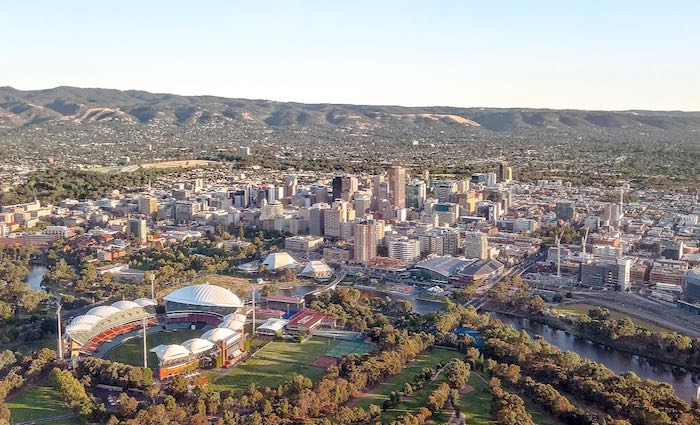Adelaide challenging Canberra as Australia's most consistent property market: Hotspotting's Terry Ryder
EXPERT OBSERVER
Adelaide is challenging Canberra as the most consistent market in capital city Australia. It keeps delivering good sales activity and above-average results on house prices – and continues to be our most under-rated market.
You’d never know any of this, as real estate consumers, because of the way mainstream media reports real estate – a focus on median price data to the exclusion of all other market barometers, sweeping generalisations which often discuss Australia as a single market, an obsession with Sydney and Melbourne as the only markets of importance, an annoying tendency to zero in on negatives, and a host of other problems.
Media seldom bothers to discuss Adelaide and when it gets the occasional brief mention it’s usually a generalised “Adelaide prices grew only 1% in the past year” or “the median house price for Adelaide fell 0.3% in the latest quarter”.
This tells us nothing of value – and disguises the multiplicity of scenarios playing out in the markets of the South Australia capital city.
So, for something with a little more depth, that tells you something that actually has value, consider the following:
In the five years Hotspotting has been conducting quarterly surveys of sales activity and price trends, Adelaide has never delivered a poor result. Most cities have had peaks and troughs in that time, but Adelaide just keeps on producing steady markets with consistent demand.
Seven out of ten Adelaide suburbs have experienced growth in their median house prices in the past 12 months, many of them with rises above 5%.
The list of suburbs with growth above 15% is dominated by top-end locations, a positive sign for the market overall, which we believe is poised for a significant growth phase.
Hotspotting’s Winter survey has identified 64 Adelaide suburbs with rising sales momentum, the second highest quarterly result for the city since we started the surveys. Over the past couple of years, the number of growth suburbs has been 45, 58, 61, 71, 60, 62 and 64.
Adelaide continues to rank well ahead of Sydney, Melbourne and Brisbane, as well as the recovering Perth market, in terms of the number of growth suburbs – and ahead of most state regional jurisdictions (where many of the strong growth markets are found at present).
There are 10 Local Government Areas across the Adelaide metropolitan area with three or more suburbs with upwardly-mobile markets.
The Marion LGA, a middle-market area in the south-west of Adelaide which has been a market leader for the past 18 months, is once again a standout – one that ranks nationally. It has nine suburbs with rising sales patterns, including Ascot Park, Edwardstown, Glengowrie, Hallett Cove, Marion, O’Halloran Hill and Seacombe Gardens.
The Charles Sturt LGA, which extends north-west from central Adelaide out to the beach areas, is close behind with eight rising suburbs. They include inner-city Brompton (where quarterly sales have been 23, 32, 38 and 50) as well as middle-market suburbs like Findon, Seaton, Flinders Park (quarterly sales 22, 25, 25, 32, 35 and 38), Woodville South and Fulham Gardens. Henley Beach and West Beach also have growth momentum.
Port Adelaide Enfield continues to be a leading precinct, with seven growth suburbs including Croydon Park, Dernancourt, Greenacres, North Haven, Rosewater and Royal Park.
Onkaparinga, which always features in our Adelaide analysis, also has seven suburbs with growth momentum – including Aldinga Beach (where quarterly sales have been 54, 63, 67 and 70), Christies Beach, Hackham, Happy Valley, Old Reynella and Seaford.
Six municipalities have between three and five rising markets each: the Burnside, Holdfast Bay, Mitcham, Salisbury, Unley and West Torrens LGAs.
While sources such as CoreLogic and SQM Research often report annual growth of only 1-2% in Adelaide house prices, these generalised figures disguise individual areas which have done better. Our suburb-by-suburb analysis shows that 70% of Adelaide suburbs have median house prices higher than a year ago - and almost half of those have grown by more than 5%.
Of the 189 Adelaide suburban markets analysed, 54 have grown 5% or more and 64 have increased by less than 5%. There are only 17 suburbs in the Adelaide metropolitan area where median house prices have fallen by more than 5%.
Many of the suburbs with the highest annual growth are towards the upper end of the Adelaide market, headed by North Adelaide (up 29% to $1,075,000), Somerton Park (up 27% to $955,000), Unley (up 14% to $990,000) and Henley Beach South (up 15% to $985,000). Aldgate and Beulah Park, with median house prices in the $800,000s, have both risen 15-16% in the past 12 months.
But there is strong growth also in other price ranges, including Mansfield Park (up 20% to $405,000), Elizabeth North (up 18% to $180,000), Underdale (up 16% to $665,000) and Broadview (up 15% to $570,000).
Terry Ryder is the founder of hotspotting.com.au
twitter.com/hotspotting
